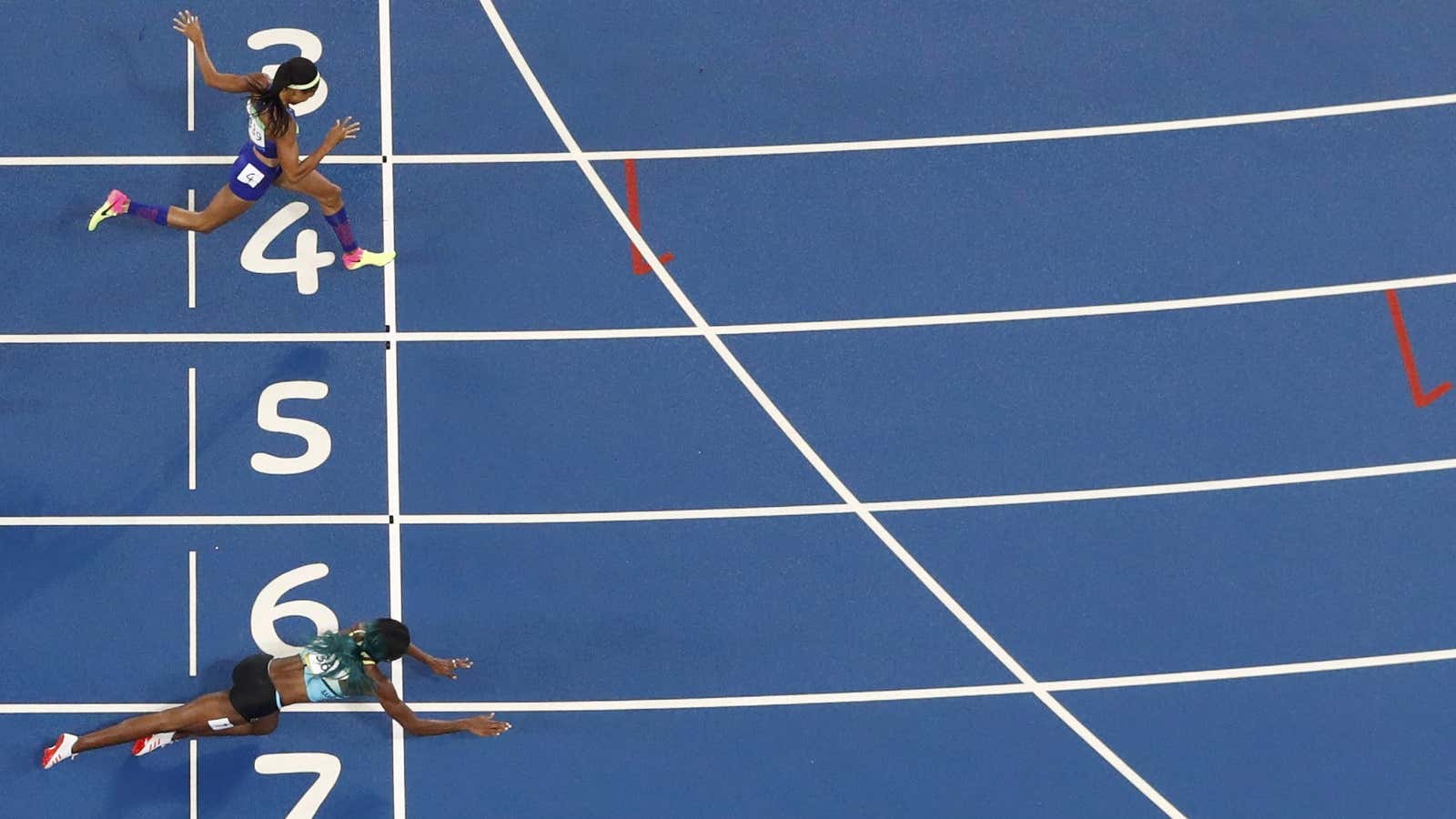The Olympic gold-medal winner in the women’s 400 meter last night (Aug. 15) didn’t run across the finish line. She flew.
Shaunae Miller of the Bahamas edged out US runner Allyson Felix, who was favored to take the gold, by the narrowest of margins, diving across the line to secure the win. It was a controversial move that immediately raised questions among spectators—Team USA fans, in particular—about how fair or legal it was. But as understandable as those reactions are, the answer is that it’s both.
Officially, diving isn’t expressly allowed in the rules of the International Association of Athletics Federations, the world governing body on track and field. But it isn’t prohibited either. The exhaustive rule book (pdf), which dictates everything from the width of the finish line to how cameras should be set up to record photo finishes, is silent on the subject. Its main stipulation is that the runner whose torso, rather than hands or head, crosses the line first is the winner:
The athletes shall be placed in the order in which any part of their bodies (i.e. torso, as distinguished from the head, neck, arms, legs, hands or feet) reaches the vertical plane of the nearer edge of the finish line as defined above.
By that measure, Miller earned gold, even if not all viewers approved. ESPN reporter Darren Rovell set up an informal poll on Twitter to see whether fans thought an Olympian should be allowed to dive for the win in a track race. As of this writing, there were more than 30,000 respondents, and 53% believed it should not be allowed.
Plenty of people have also vented their feelings on Twitter since the race.
Legal and fair aren’t always the same thing, but even so, it’s hard to argue against the fairness of Miller’s win. Miller and Felix had all the same tools at their disposal, including the option of diving. It’s an unorthodox move, but runners, especially Olympians, know it’s allowed. In fact, David Neville won the bronze for the US in the 2008 Olympics by diving—and beat out a runner from the Bahamas.
US hurdler Lolo Jones, who has competed in two Olympics, including the 2008 games, pointed out that it’s something many runners have done at some point, and perfectly fair.
The likely reason more races don’t end in dives—aside from the fact that diving onto solid ground while running at full speed is terrifying and could lead to injury—is that, as Vox reported, you begin to slow down the instant you leave your feet. It’s only useful in the very last moment of a race as a way to project your torso as far forward as possible, which according to the rules, is all that matters at the finish line.
